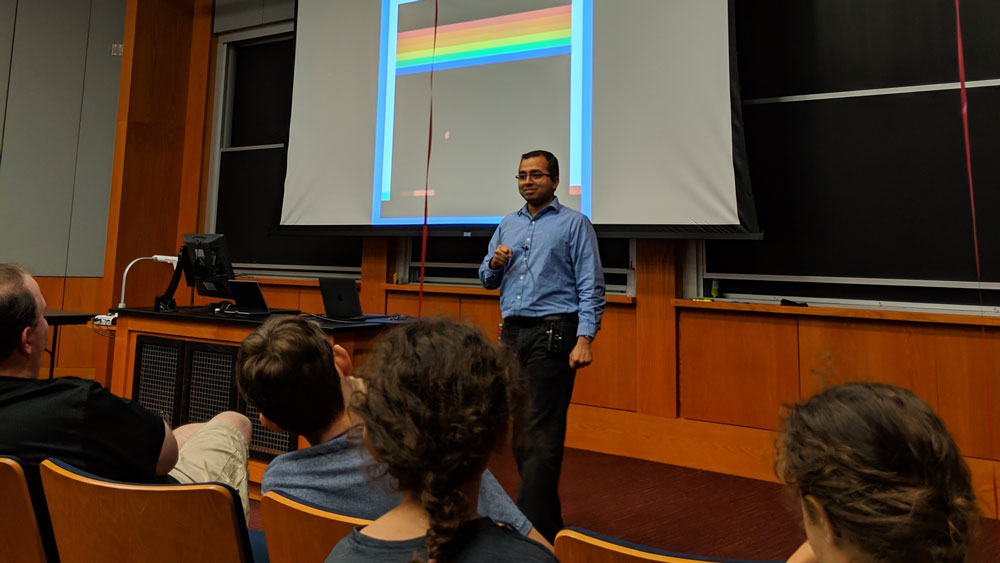
Artificial intelligence is making headlines.
From autonomous cars, military and healthcare projects, advancements, and mishaps, it has captured the hearts and minds of researchers, science fiction writers and the general public alike.
To spur creativity, encourage ingenuity and excite the leaders of tomorrow, Dr. Dileep Kalathil discussed the reality of artificial intelligence (AI) and reinforcement learning to an audience of middle and high school students at the annual Texas A&M University Physics and Engineering Festival.
Kalathil serves as an assistant professor in the Department of Electrical and Computer Engineering at Texas A&M.
“I would definitely do it again,” said Kalathil. “I like teaching and interacting with kids, especially when they ask questions. It’s a rewarding experience for me.”
Ironically taking place in Stephen W. Hawking Auditorium, named after the late theoretical physicist who warned that such technology could be the end of mankind, the presentation started at the very beginning: What is AI?
“The current goal of artificial intelligence is to create an intelligent machine that can act rationally,”said Kalathil. “And rationality is essentially only concerned with what decisions are made, not the decision-making process.”

To demonstrate this concept, Kalathil described two situations. First, a machine that is designed to clean a room. Second, a machine that is designed to throw things around and make a mess. While these two AIs might seem counterproductive to one another, they are both functioning within their programmed parameters. Thus, they are both acting rationally.
Although AI has been expanded to be able to play table tennis, assist in surgery and translate spoken language in real time, Kalathil explained that actually emulating the human brain and creating a computer consciousness has been deemed unadvisable by researchers. This is mostly due to the fact that the brain is not modular, like a computer system. Similarly, the human brain learns from reasonable understanding and a constantly changing memory of sensation, stimuli, topics and emotion. AI programs learn from a controlled input of datasets and coding parameters.
Which led the conversation to the role of reinforcement learning.
Like a child learning through experience that jumping from heights can hurt and correcting their behavior to avoid pain, Kalathil said that AI systems can be programmed to function and grow through reinforcement learning.
At its core, reinforcement learning (RL) revolves around the concept that optimal action and task completion is reinforced by a positive feedback reward. RL relies upon machine, software and algorithmic components to determine what the ideal action is based on feedback received from the environment.

However, despite careful programming, RL does not guarantee success on the first try. An AI system will often try many different ways to accomplish its objective — gathering and interpreting positive and negative feedback from each attempt to understand how successful it was and adjusting its method until the ideal outcome is achieved. Through this trial and error and feedback loop, optimal actions are reinforced.
So, like a child determining whether or not to jump from a certain height, the system weighs its options against information gathered from previous attempts. Is the distance to the ground too far? Has a similar jump been taken before? What was the outcome? Was there pain in that jump? Perhaps then, another method should be used to get to the ground.
While RL is still in the early stages of application, the industry is already finding uses for it. From piloting autonomous aircrafts to predictive maintenance to smart gaming, the future of AI is filled with endless opportunity and discovery.
“We are developing artificial intelligence in order to create systems to gain a better understanding of human intelligence,” said Kalathil. “Like I told (the audience of students), we are living in a very, very exciting era.”